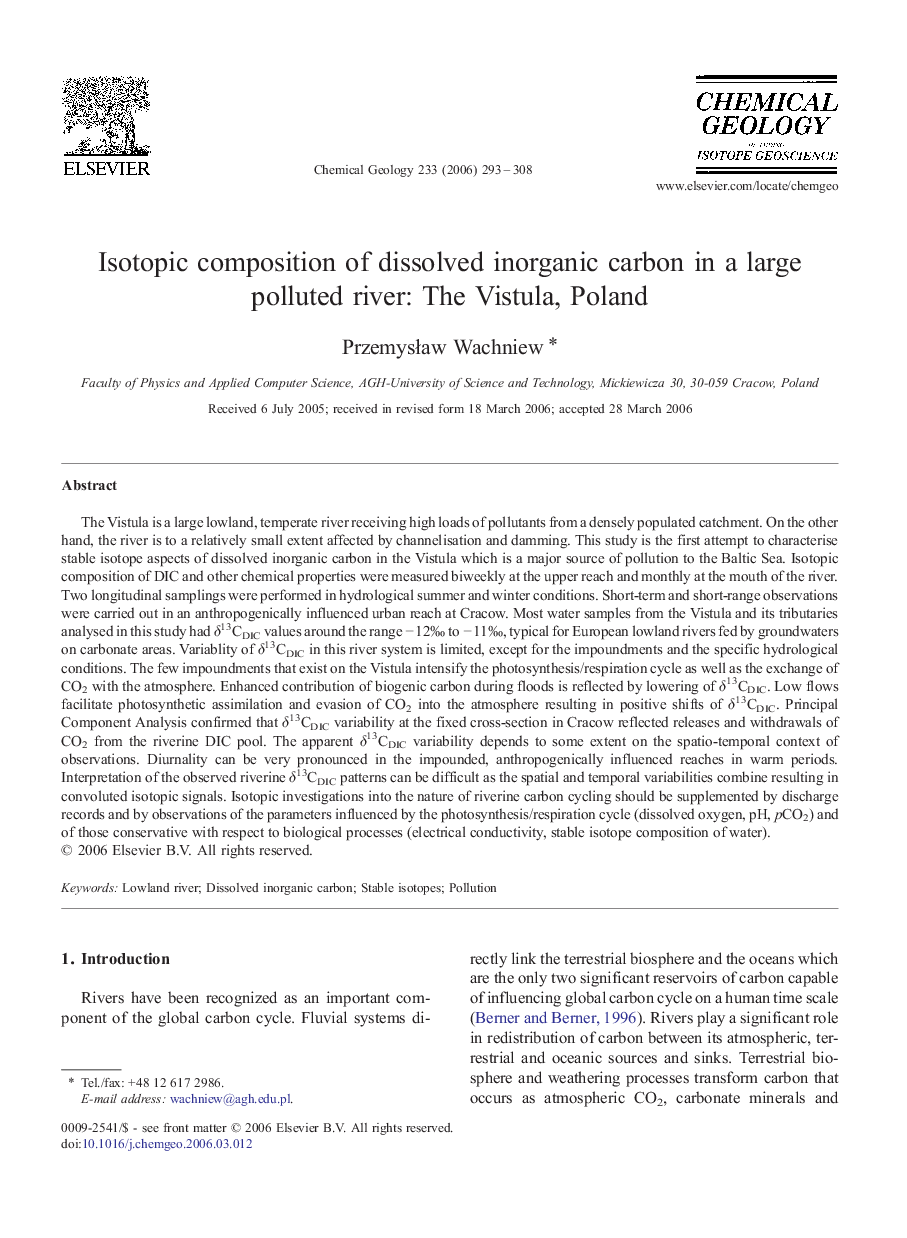| کد مقاله | کد نشریه | سال انتشار | مقاله انگلیسی | نسخه تمام متن |
|---|---|---|---|---|
| 4701392 | 1637763 | 2006 | 16 صفحه PDF | دانلود رایگان |

The Vistula is a large lowland, temperate river receiving high loads of pollutants from a densely populated catchment. On the other hand, the river is to a relatively small extent affected by channelisation and damming. This study is the first attempt to characterise stable isotope aspects of dissolved inorganic carbon in the Vistula which is a major source of pollution to the Baltic Sea. Isotopic composition of DIC and other chemical properties were measured biweekly at the upper reach and monthly at the mouth of the river. Two longitudinal samplings were performed in hydrological summer and winter conditions. Short-term and short-range observations were carried out in an anthropogenically influenced urban reach at Cracow. Most water samples from the Vistula and its tributaries analysed in this study had δ13CDIC values around the range − 12‰ to − 11‰, typical for European lowland rivers fed by groundwaters on carbonate areas. Variablity of δ13CDIC in this river system is limited, except for the impoundments and the specific hydrological conditions. The few impoundments that exist on the Vistula intensify the photosynthesis/respiration cycle as well as the exchange of CO2 with the atmosphere. Enhanced contribution of biogenic carbon during floods is reflected by lowering of δ13CDIC. Low flows facilitate photosynthetic assimilation and evasion of CO2 into the atmosphere resulting in positive shifts of δ13CDIC. Principal Component Analysis confirmed that δ13CDIC variability at the fixed cross-section in Cracow reflected releases and withdrawals of CO2 from the riverine DIC pool. The apparent δ13CDIC variability depends to some extent on the spatio-temporal context of observations. Diurnality can be very pronounced in the impounded, anthropogenically influenced reaches in warm periods. Interpretation of the observed riverine δ13CDIC patterns can be difficult as the spatial and temporal variabilities combine resulting in convoluted isotopic signals. Isotopic investigations into the nature of riverine carbon cycling should be supplemented by discharge records and by observations of the parameters influenced by the photosynthesis/respiration cycle (dissolved oxygen, pH, pCO2) and of those conservative with respect to biological processes (electrical conductivity, stable isotope composition of water).
Journal: Chemical Geology - Volume 233, Issues 3–4, 15 October 2006, Pages 293–308